Quirkos is 10!

I'm not sure how it's snuck up on us, but Quirkos is 10 years old today!
It was on October 8th, 2014 that we released the first public version of Quirkos, at a party at a pub in Leith, I pressed the 'upload' button, surrounded by developers, friends, and researchers that had all been involved in getting Quirkos off the ground.
It's grown steadily during that time, and you can easily find thousands of articles, PhD and masters studies that have cited Quirkos as helping with their qualitative analysis. We've helped teams in hundreds of universities, government departments, market research firms and NGOs from the UN, the Joseph Rowntree Foundation to small community organisations led by participants.
Looking back, it's crazy how little Quirkos has changed, we've tried really hard not to add lots of new features - the whole philosophy was to keep it qualitative analysis simple! And it's bizarre how many of the foundations we got right at the beginning, and how many little tweaks to interactivity and behavior we tried to do differently in Quirkos Web, and then went closer to the first version of Quirkos!
However, the visual style certainly improved! So let's do a quick trip through our embarrassing outfits from 10 years ago to today. Here's one of the earliest digital sketches of the interface (from 2013):
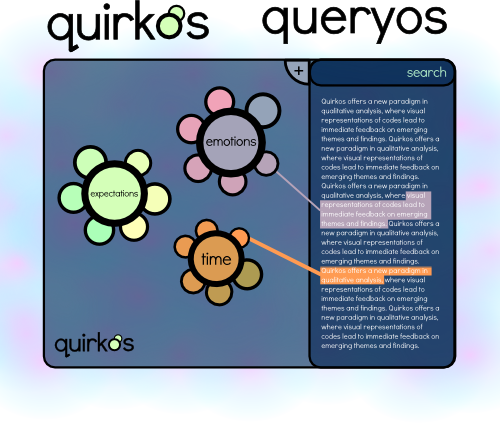
To the first working alpha version created and refined by the amazing Adrian Lubik, complete with trippy background, old logo, floating menu bar:
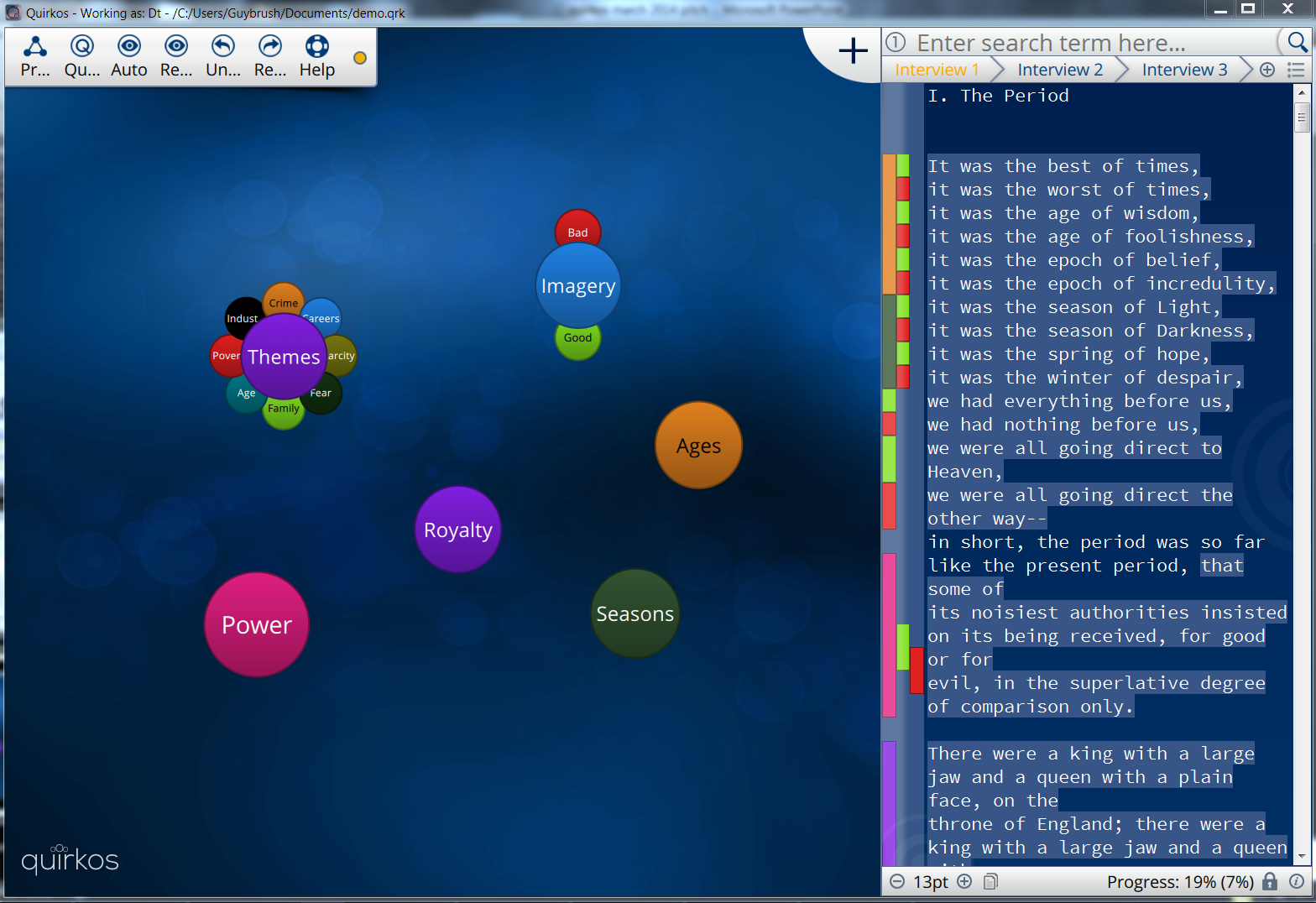
To the first public version (10 years ago today!):
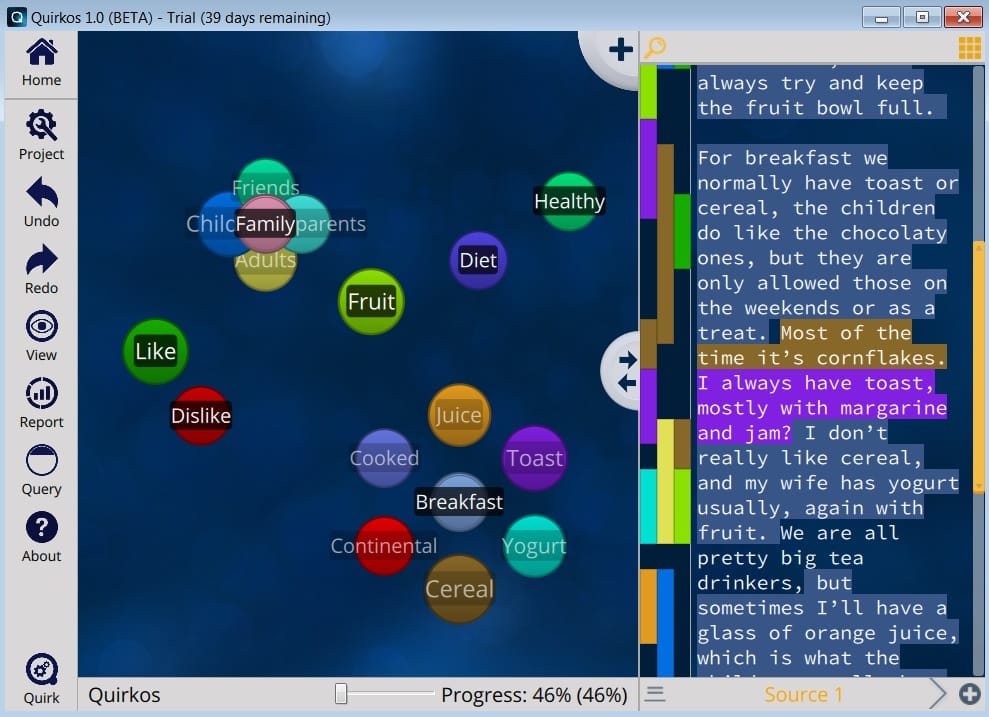
Kristin joined us to reach out to commercial organisations and 4 years later, we had loads of feedback, and I'd spent so many hours watching people in workshops learn to use sessions, I had such a clear idea about how to tweak things to be where they should be. So we added memos, rich text, new visualisations and a new much cleaner interface for Quirkos 2 in 2018:
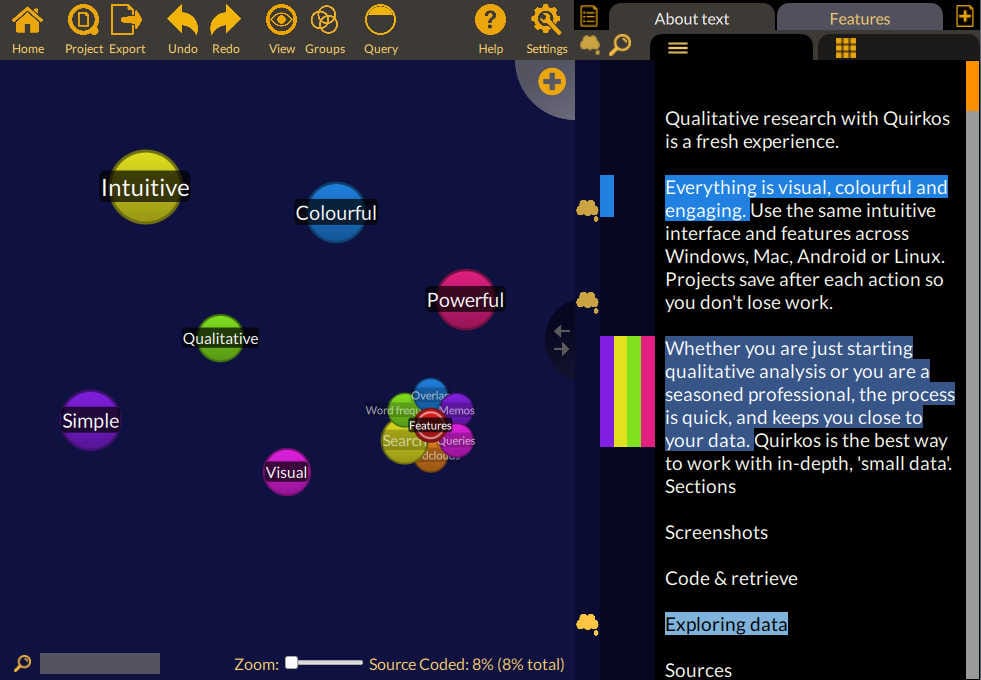
Quirkos Cloud: 2019 - Present
But what people were craving was a cloud version, where people could access their data anywhere, on any device, and collaborate in real time. Lorinc Balog joined us to develop this, and it took two years! But at the end of 2019 it was ready, and we launched Quirkos Cloud.
It's crazy looking back the work on this, and how cautious we were about developing (entirely in house) a infrastructure for global distributed data for qualitative analysis that had to be 100% reliable. And initially take up was good, slow, but everything worked! As an aside, although we obviously have backups of the whole system, we've never had to use them (except for users who accidentally deleted projects!).
Then something happened that changed Quirkos... The COVID-19 lockdown.
We'd only launched the platform a few months before lockdown, but suddenly academics and students couldn't access their data or software at their institutions, and were looking for a way they could keep working and collaborating in lockdown. At the time, it was pretty much just us and Dedoose that had this functionality, and our user base tripled in a month, and didn't stop growing.
Thankfully, Lorinc had done such an amazing job on designing the Quirkos Cloud systems, that everything cloud related was bizarrely smooth! We had to keep upgrading the servers with more memory, storage and cores as useage rocketed, but the distributed design proved itself (and still does today, with thousands of users at any time).
However, this was personally a really tough time for me. The huge influx of new users was great, but created a trail of paperwork that took nearly a year to clear (while working in the shed and homeschooling). So we moved office, hired Cathy and later Jess, who are still with us today, and our users are still growing month-by-month.
Quirkos Web: 2022 - present
The most recent chapter has been Quirkos Web: a complete rewrite of Quirkos (thanks Flatlogic for getting the ball rolling) to work directly in the browser (and on phones and tablets) with data connected to Quirkos Cloud that launched just two years ago in 2022. We knew this was going to be a hit (especially as universities were increasingly fussy about installing software on computers), but it has taken us a while to add all the functionality and polish (thanks Micheal!) we wanted:
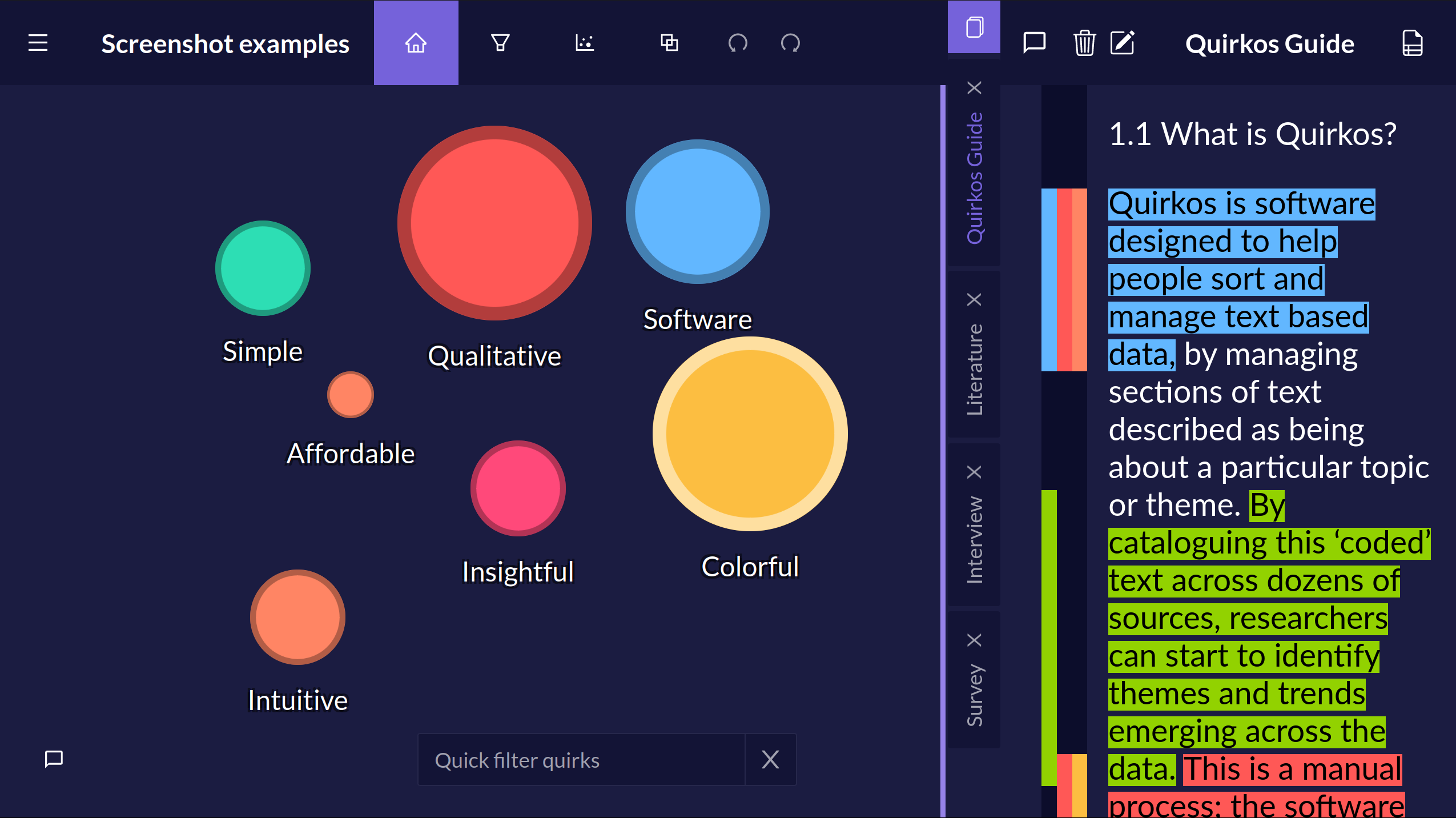
The last thing we added a year or so ago was Quirkos Transcribe, another in-house developed project, to create a completely end-to-end encrypted automatic transcription service, that would use the best machine learning algorithms, but not share data with anyone. It's probably something that most people don't know about, but once people try, it has been amazingly popular. And we built it so efficiently that it runs entirely off solar power (yes, even in the Scottish winter!). Suck on that, ChatGPT!
So what's for the future? No, we are not going to sell out to Lumivero like ATLAS.ti, or add GPT based 'analysis' AI that creates plausible, but inaccurate results. It's not what our users want (less than 2% of qualitative researchers in our most recent survey wanted AI to do analysis for them). But they do want the improved interface of Quirkos Web to be the same in the offline desktop app, so we are going to do that, while keeping the offline mode for institutions that are forbidden for using cloud storage for confidential data.
Basically, we want to keep doing what we've always done, keep Quirkos simple, keep offering help for the whole qualitative research process, and keep growing organically by word-of-mouth (so help us spread the word!). We've always put our values as researchers ahead of commercial gain and will continue to do so. We will keep listening to our core users, and help them do amazing and powerful qualitative research that can change and challenge the world. We are always honored and humbled to be a small part of that puzzle.
Not tried our simple tool for qualitative analysis yet? Learn more, or give the free trial a spin!
